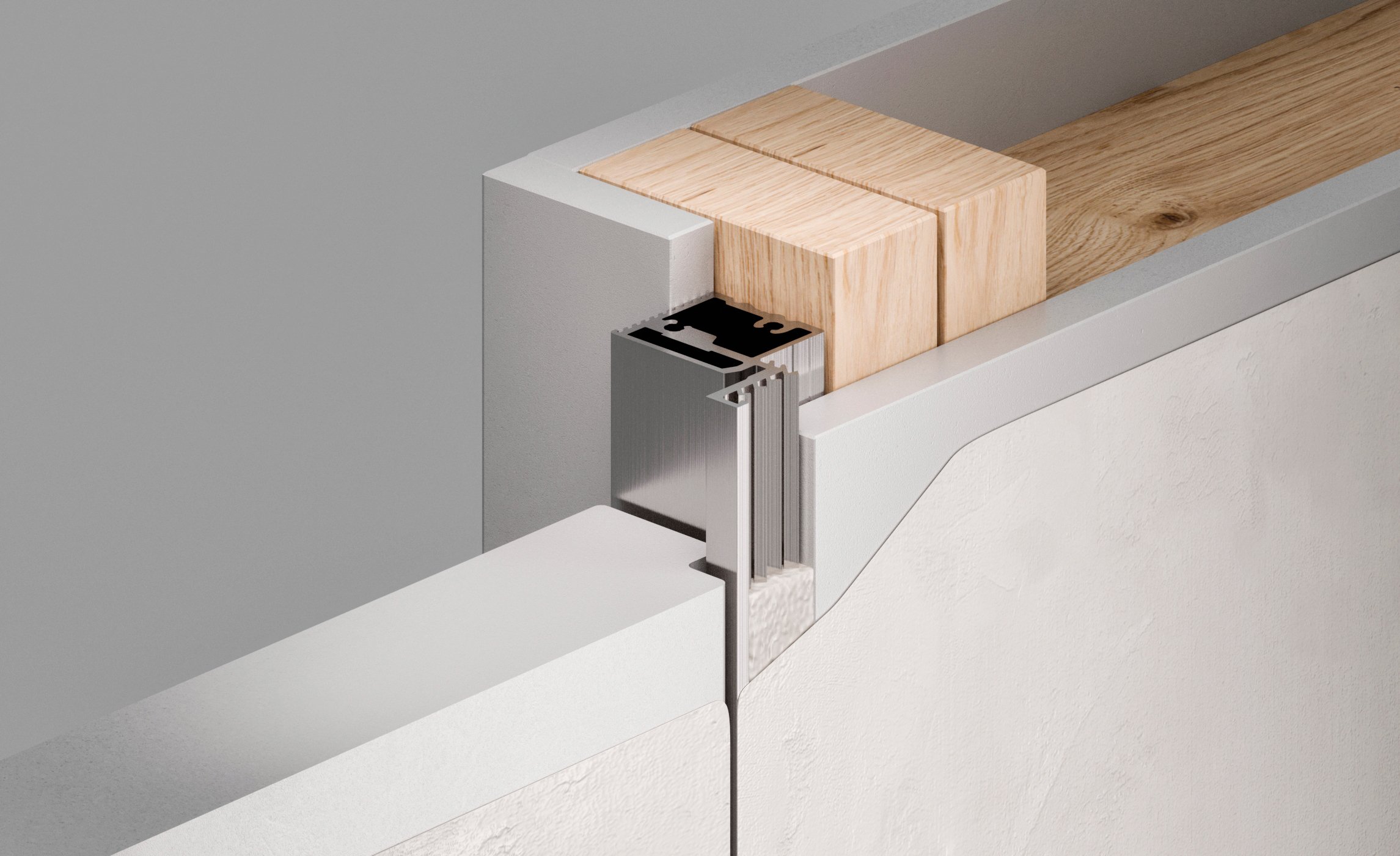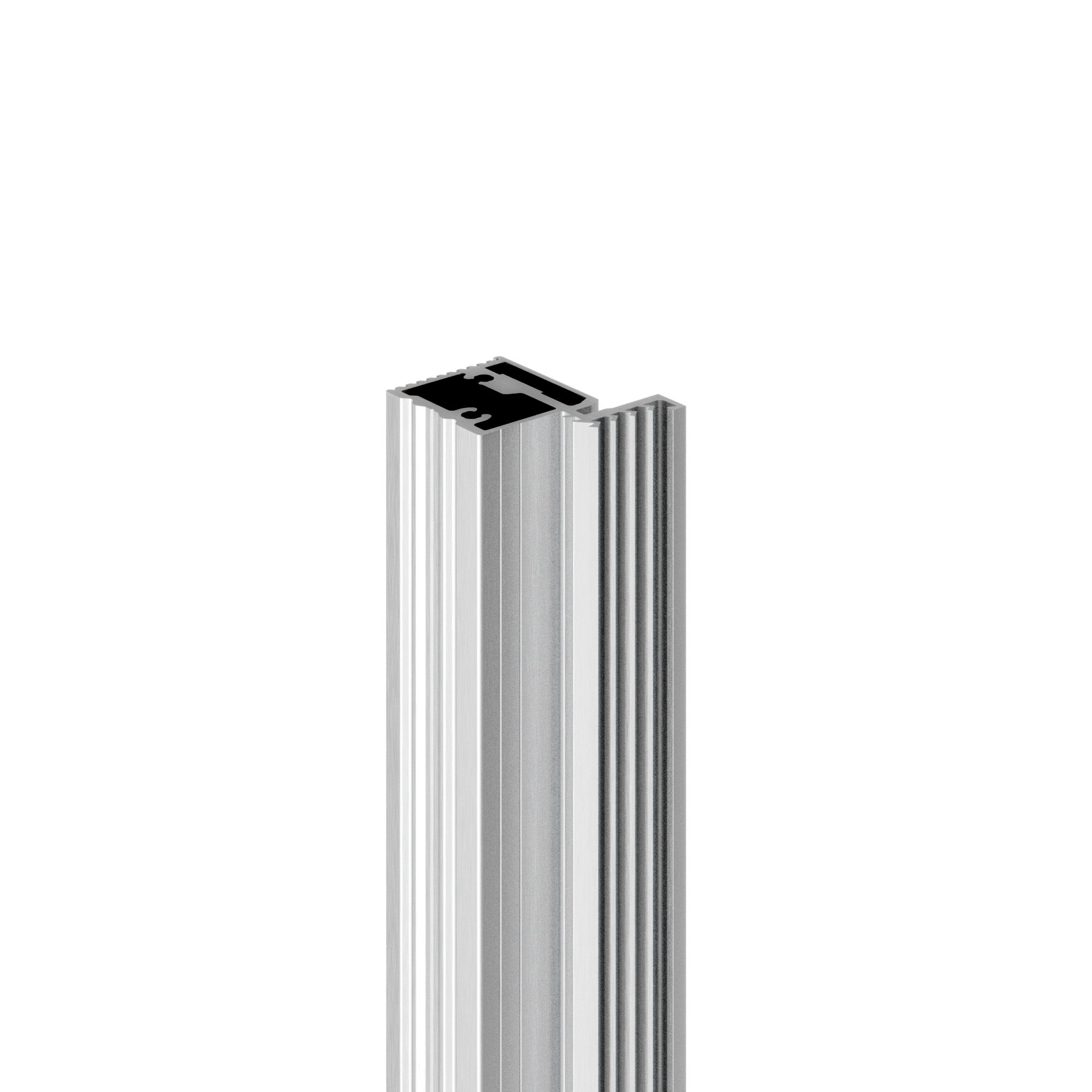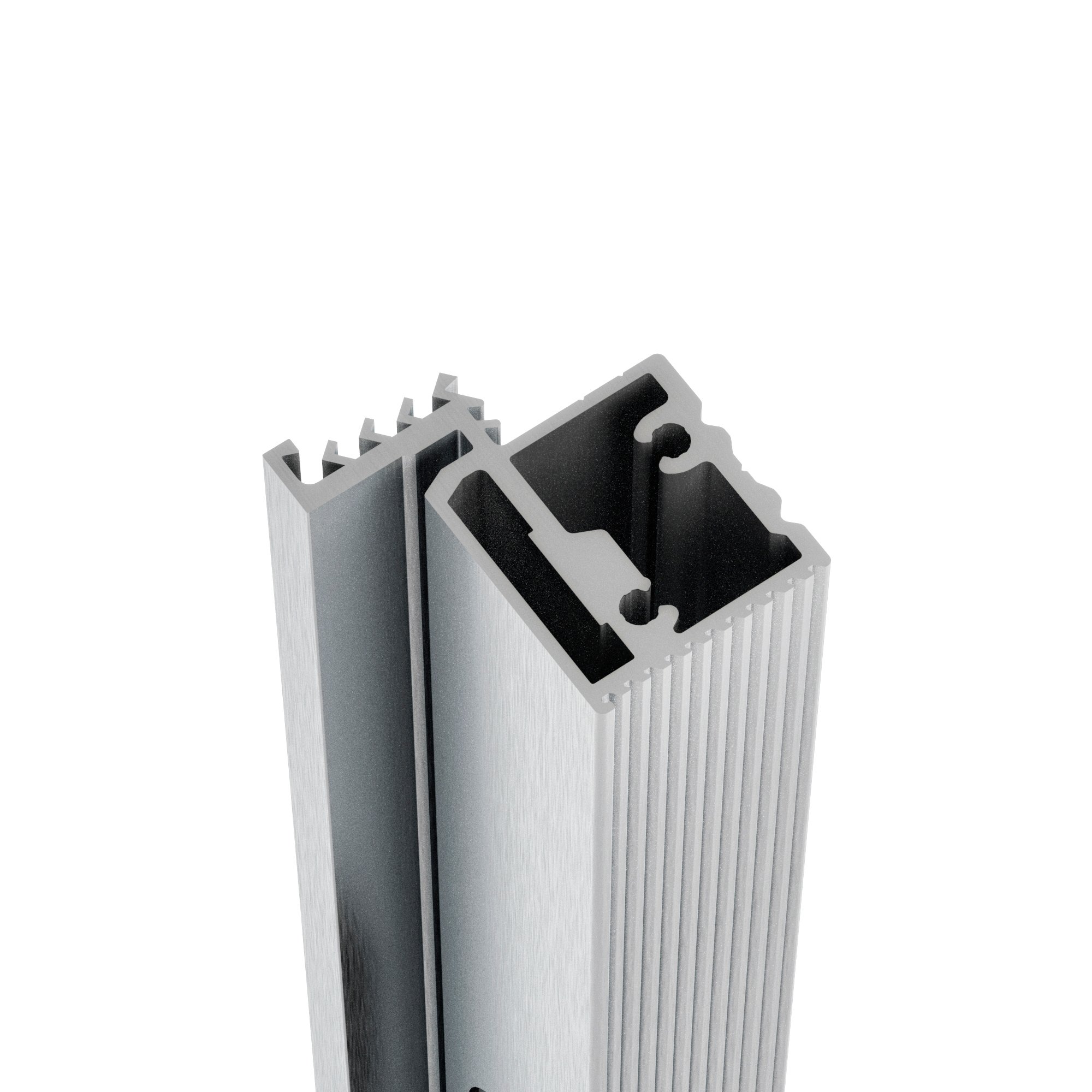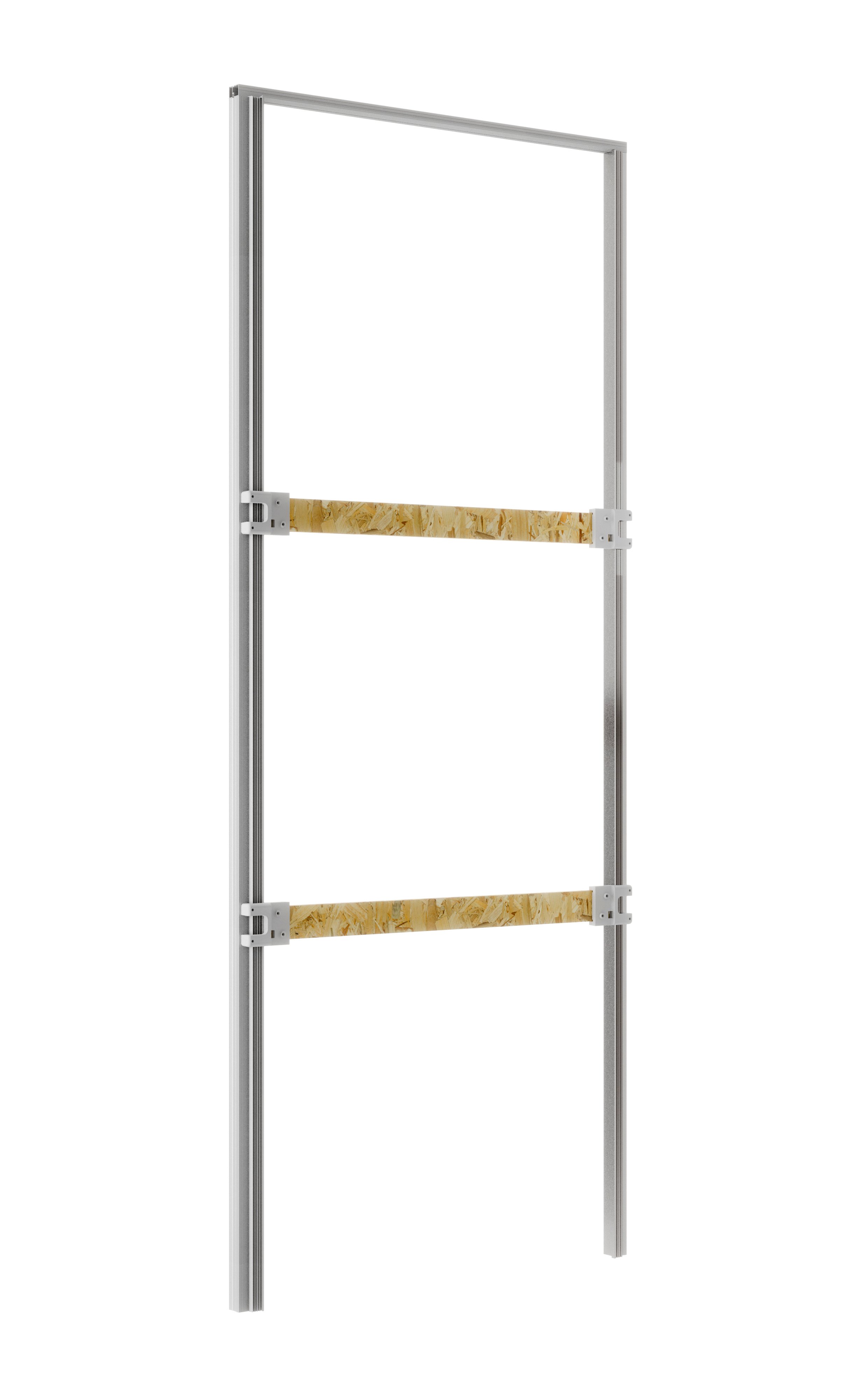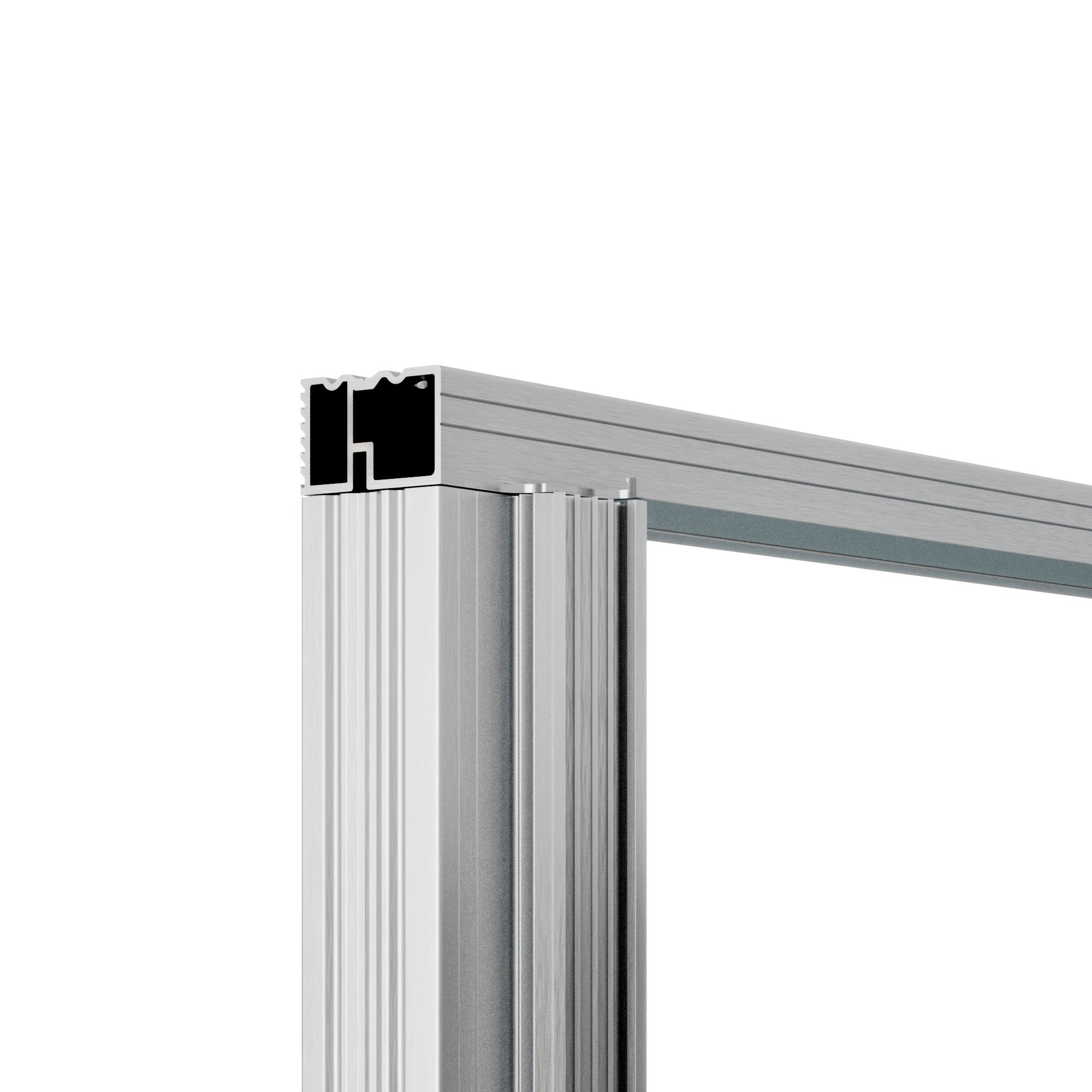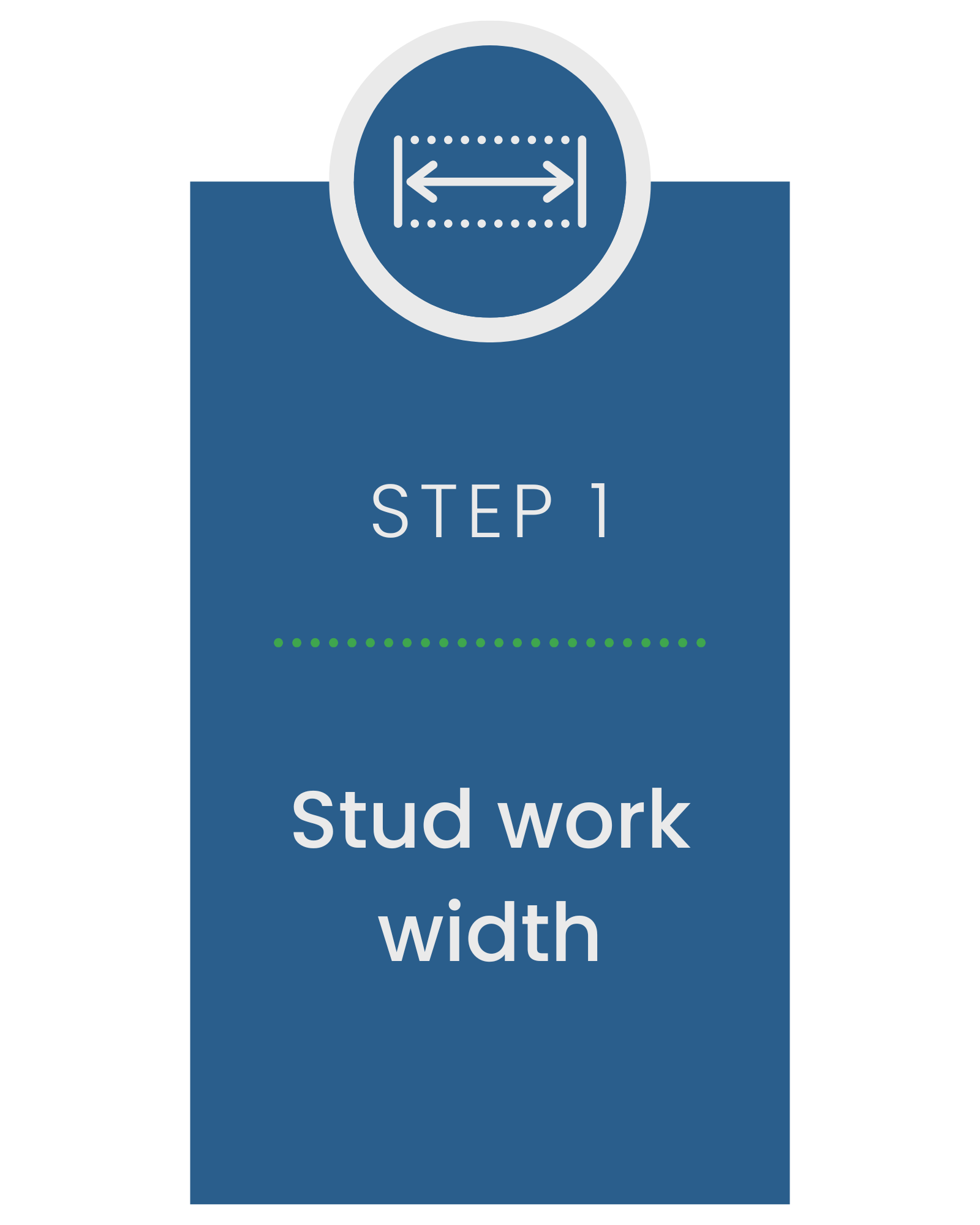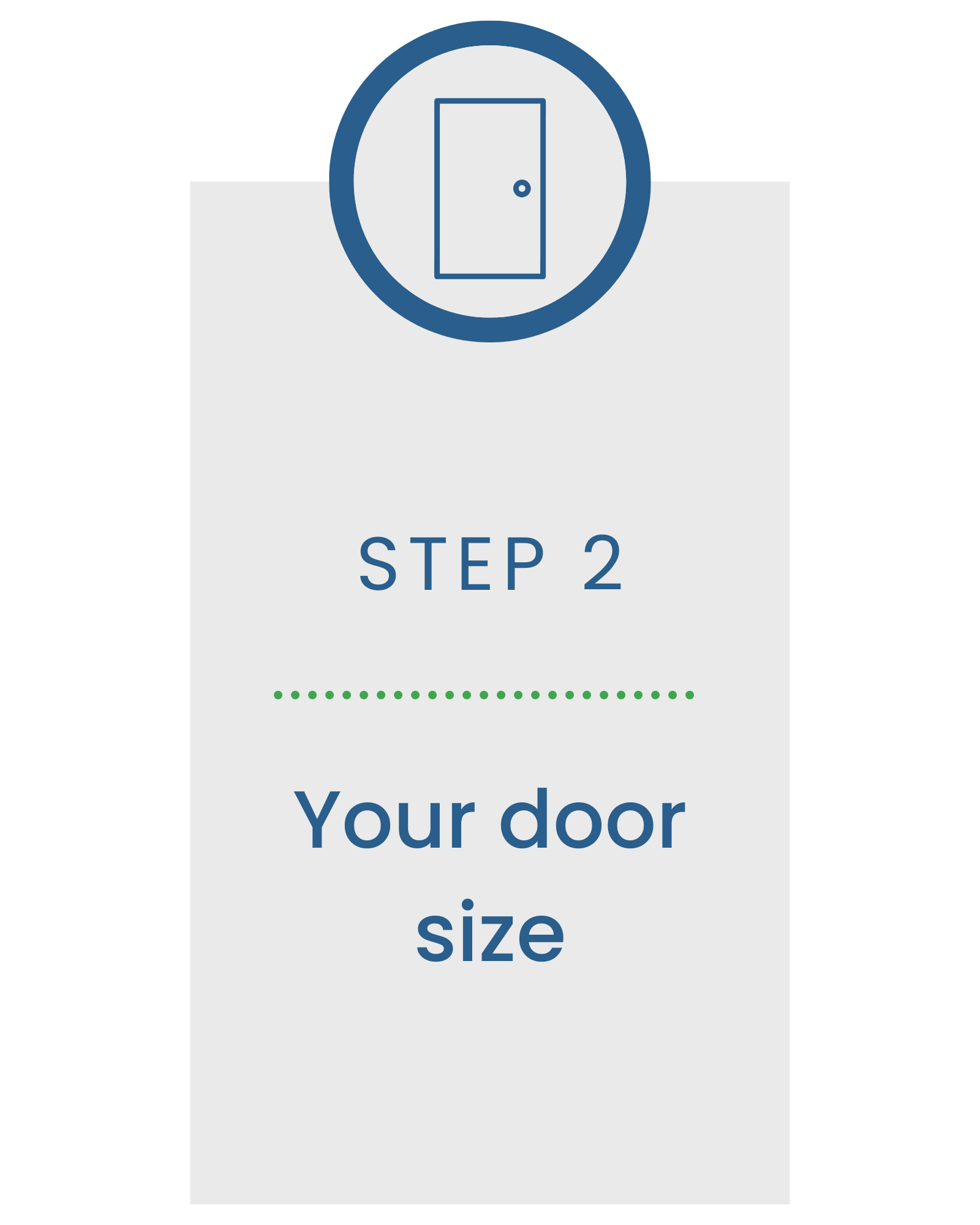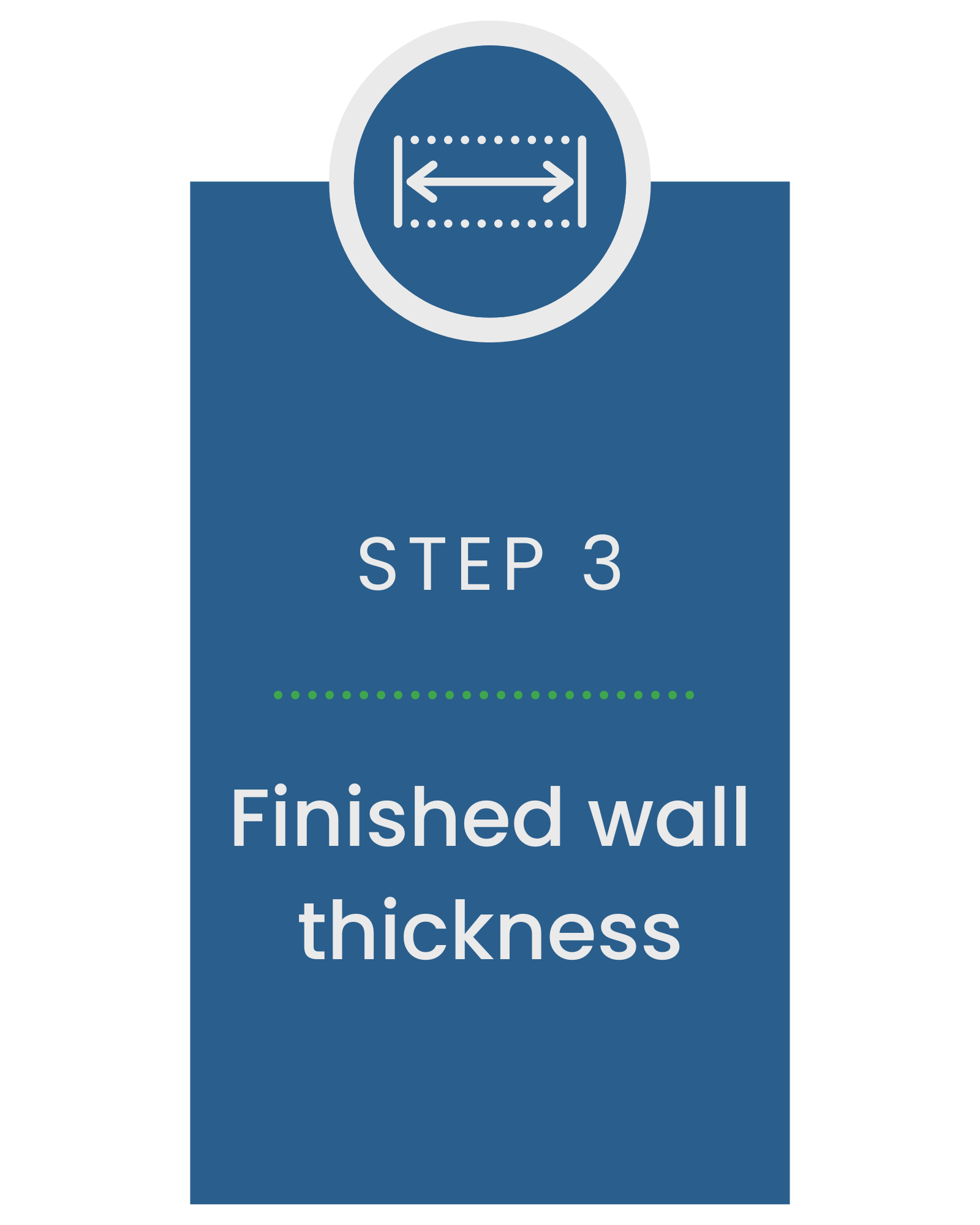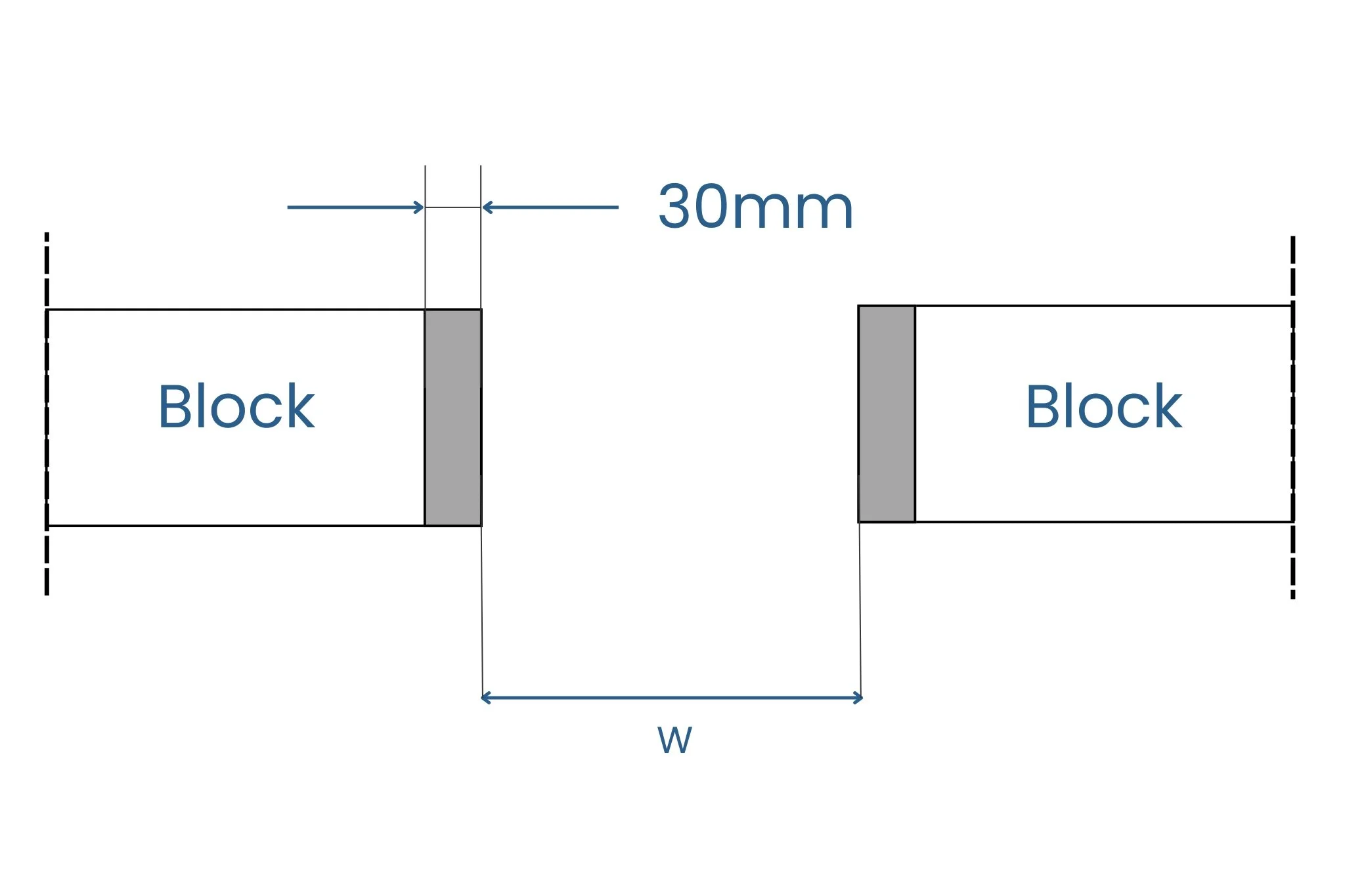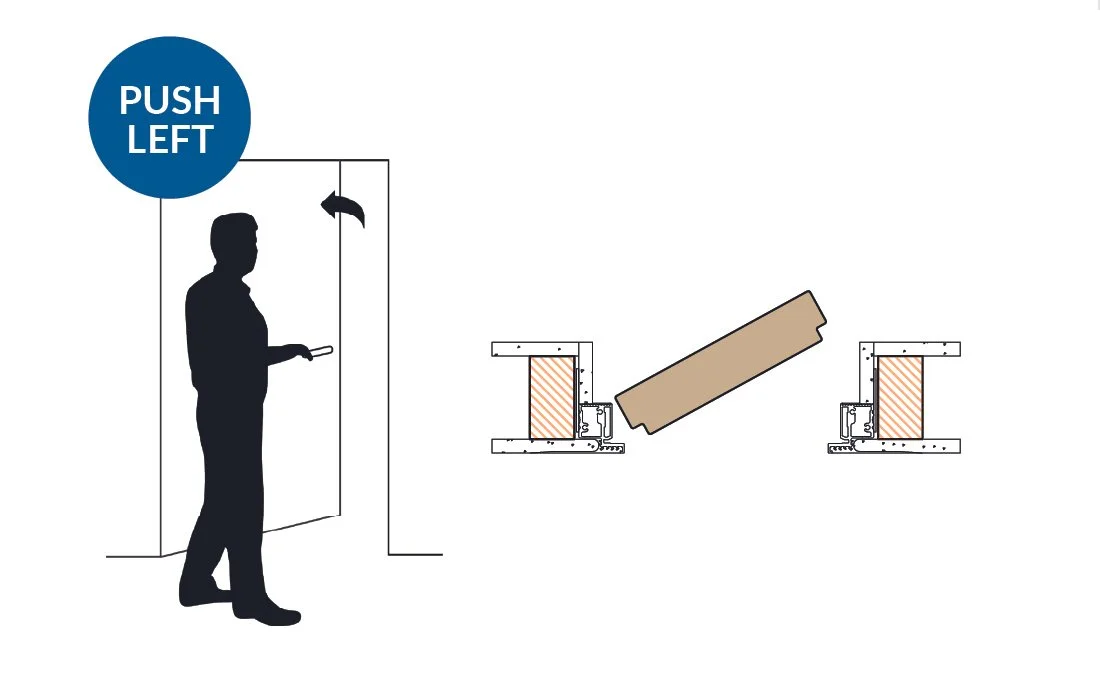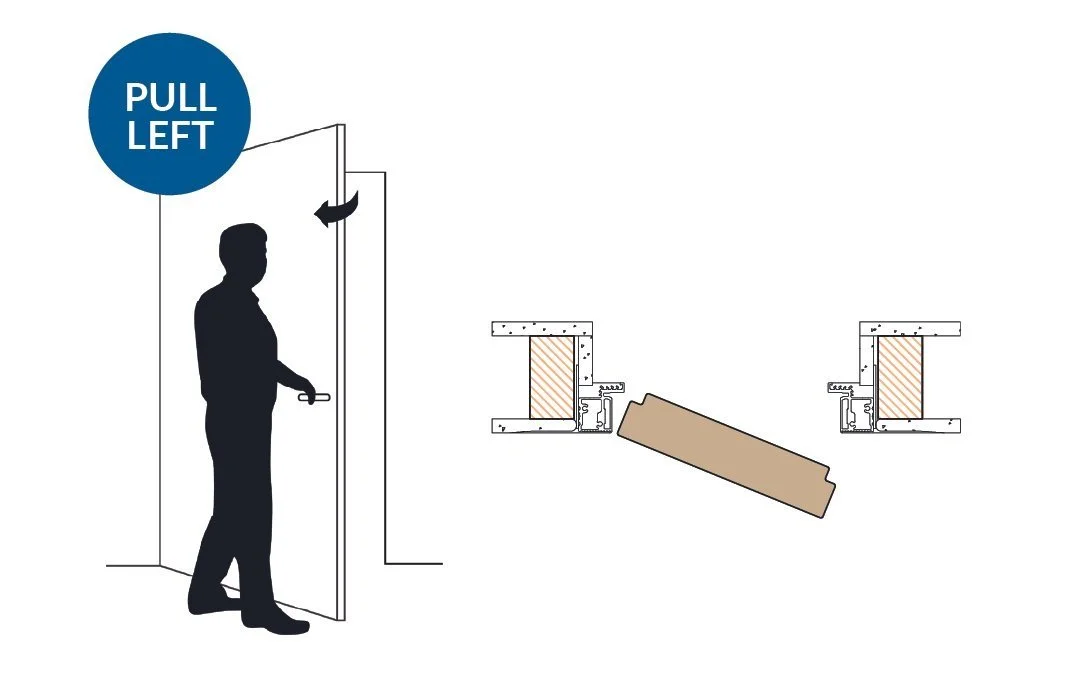Stud work
Our pocket door frames are designed to fit industry-standard stud work sizes of 70mm, 75mm, and 90mm. A key consideration when choosing your frame is your stud work width, door size and determining the final wall thickness after boarding.
Pocket Frame:
Your stud work:
63mm CLS or 70mm Steel
75mm or 100mm Timber
89mm CLS or 92mm Steel
The next step is to determine your door size, whether you're choosing a new one or reusing your existing door. Our pocket door frames are compatible with a wide range of UK standard door sizes.
For FD30 fire rated pocket door kits only; please note that you will need to purchase Jeld-wen FD30 doors. These can be purchased at places such as: B&Q, Travis Perkins, Jewsons, Screwfix and many more
Depending on the type of stud work you are using—CLS, steel, or timber—we offer a selection of pocket door frames designed to suit each option.
Your finished wall thickness is set once you've installed your pocket door frame and finished boarding and your stud work. To give it a clean, polished look, we offer a Jamb (lining) kit that covers the inside of the frame, hiding the internal parts. It also comes with brushes to help keep dust and dirt out. You can calculate this by looking at out stud work information below.
Your finished thickness:
Pocket Frame:
95mm Jamb 120mm (Standard & FD30)
100mm Jamb 125mm (Standard & FD30)
115mm Jamb 140mm (Standard & FD30)
70mm stud work
63mm CLS timber stud work (95mm finished wall thickness.)
Add a 6mm plywood layer: Attach a single layer of 6mm plywood to one side of the stud wall. This will increase the stud thickness to a total of 70mm.
Add plasterboard to both sides: Next, apply a 12.5mm plasterboard layer to each side of the wall. This will add 25mm (12.5mm on each side) to the total thickness. Final thickness: The combined thickness of the stud wall, plywood, and plasterboard layers will be 95mm (70mm + 25mm).
70mm steel stud work (95mm finished wall thickness.)
Add plasterboard to both sides: Attach a single 12.5mm plasterboard layer to each side of the pocket door and stud work.
Final thickness: With the plasterboard layers added, the total thickness of the pocket door and stud work will be 95mm. (This includes the combined thickness of the stud work and the 12.5mm layers on both sides.)
FD30 Fire Rated - 70mm Pocket Door Frame
Add plasterboard to both sides: Attach two layers 12.5mm plasterboard to each side of the pocket door and stud work.
Final thickness: With the plasterboard layers added, the total thickness of the pocket door and stud work will be 120mm. (This includes the combined thickness of the stud work and the 12.5mm layers on both sides.)
FD30 Jamb and Intumescents: Ensure that the FD30 jamb and fittings are installed to comply with FD30 fire safety standards.
75mm stud work
75mm timber stud work (100mm finished wall thickness.)
Add plasterboard to both sides: Attach a single 12.5mm plasterboard layer to each side of the pocket door and stud work.
Final thickness: With the plasterboard layers added, the total thickness of the pocket door and stud work will be 100mm. (This includes the combined thickness of the stud work and the 12.5mm layers on both sides.)
100mm stud work installation (125mm finished wall thickness.)
Prepare the Frame – If using a 75mm frame with 100mm stud work, first remove brackets H, I, and J from the materials.
Position and Secure – Centralise the frame within the stud work. Pre-drill six holes into the track (part D), clear any debris, and test the rollers to ensure they move smoothly.
Plaster boarding – Place a 12.5mm plasterboard sheet under the frame’s lip on both sides, aligning it with the 100mm stud work. Plasterboard as usual, Ensure the plasterboard above the door opening aligns with the bottom of the track.
FD30 Fire Rated - 75mm Pocket Door Frame
Add plasterboard to both sides: Attach two layers 12.5mm plasterboard to each side of the pocket door and stud work.
Final thickness: With the plasterboard layers added, the total thickness of the pocket door and stud work will be 125mm. (This includes the combined thickness of the stud work and the 12.5mm layers on both sides.)
FD30 Jamb and Intumescents: Ensure that the FD30 jamb and fittings are installed to comply with FD30 fire safety standards.
90mm stud work
89mm timber stud work (115mm finished wall thickness.)
Add plasterboard to both sides: Attach a single 12.5mm plasterboard layer to each side of the pocket door and stud work.
Final thickness: With the plasterboard layers added, the total thickness of the pocket door and stud work will be 115mm. (This includes the combined thickness of the stud work and the 12.5mm layers on both sides.)
92mm timber stud work (115mm finished wall thickness.)
Add plasterboard to both sides: Attach a single 12.5mm plasterboard layer to each side of the pocket door and stud work.
Final thickness: With the plasterboard layers added, the total thickness of the pocket door and stud work will be 115mm/117mm. (This includes the combined thickness of the stud work and the 12.5mm layers on both sides.)
FD30 Fire Rated - 90mm Pocket Door Frame
Add plasterboard to both sides: Attach a two layers 12.5mm plasterboard to each side of the pocket door and stud work.
Final thickness: With the plasterboard layers added, the total thickness of the pocket door and stud work will be 140mm. (This includes the combined thickness of the stud work and the 12.5mm layers on both sides.)
FD30 Jamb and Intumescents: Ensure that the FD30 jamb and fittings are installed to comply with FD30 fire safety standards.
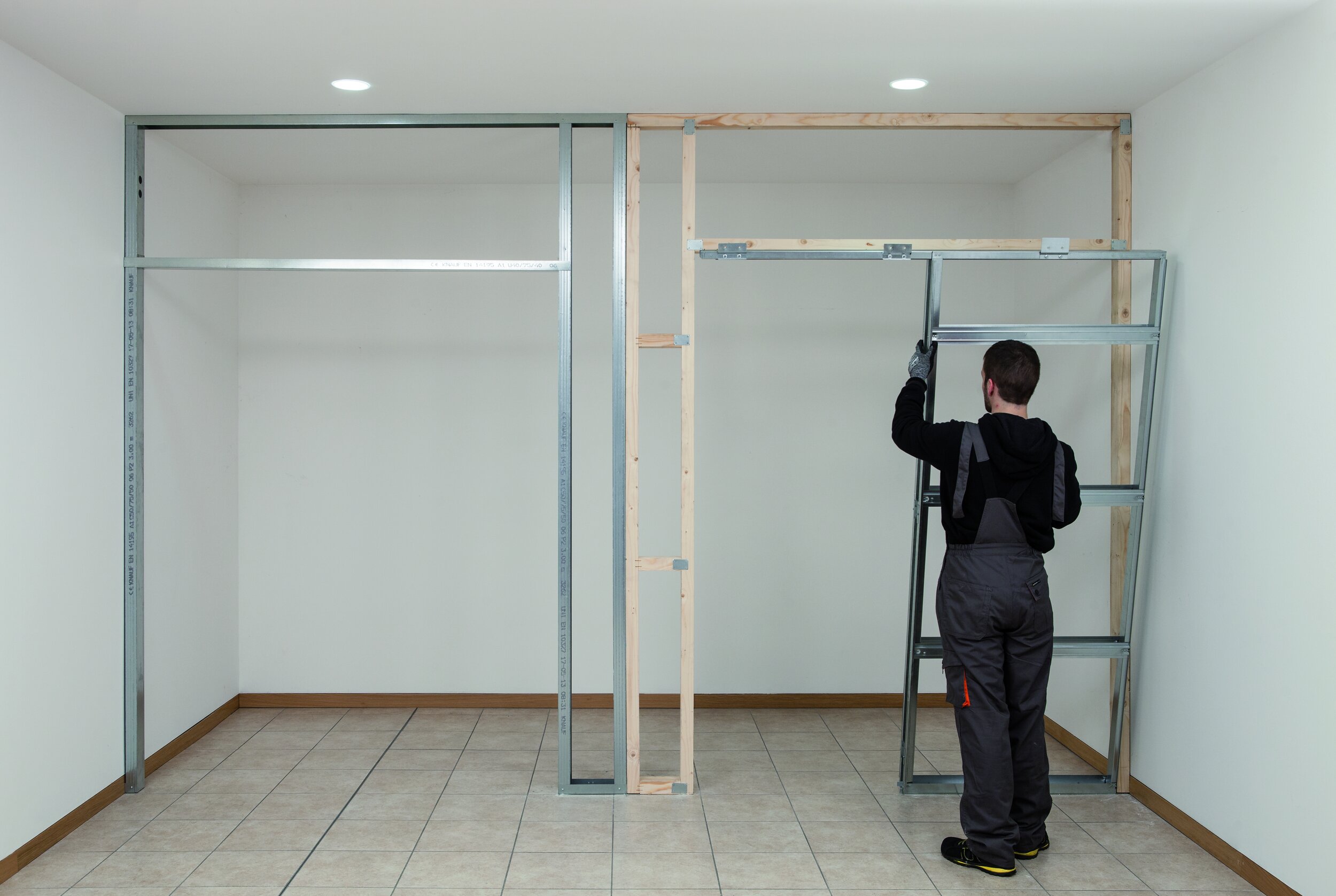
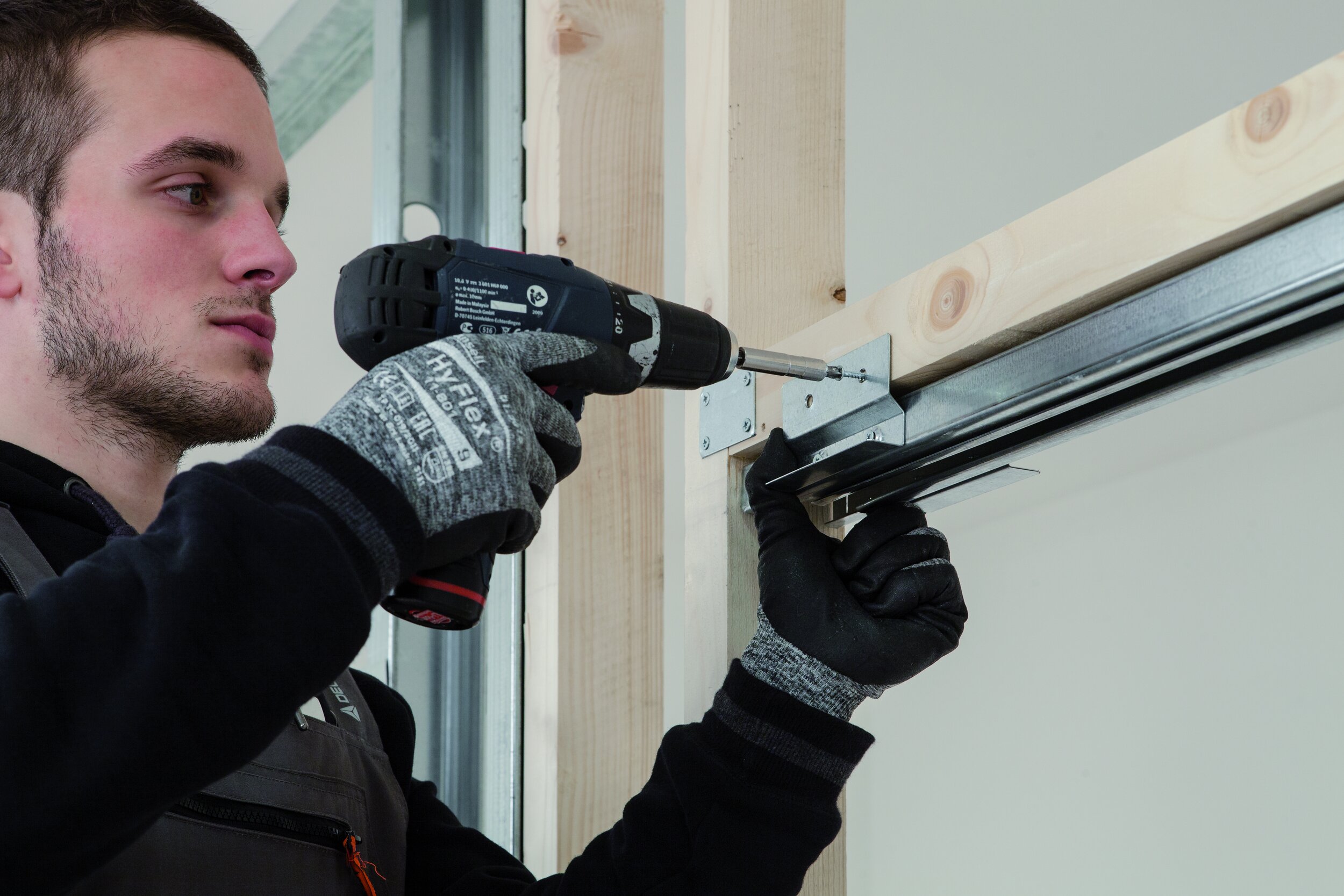
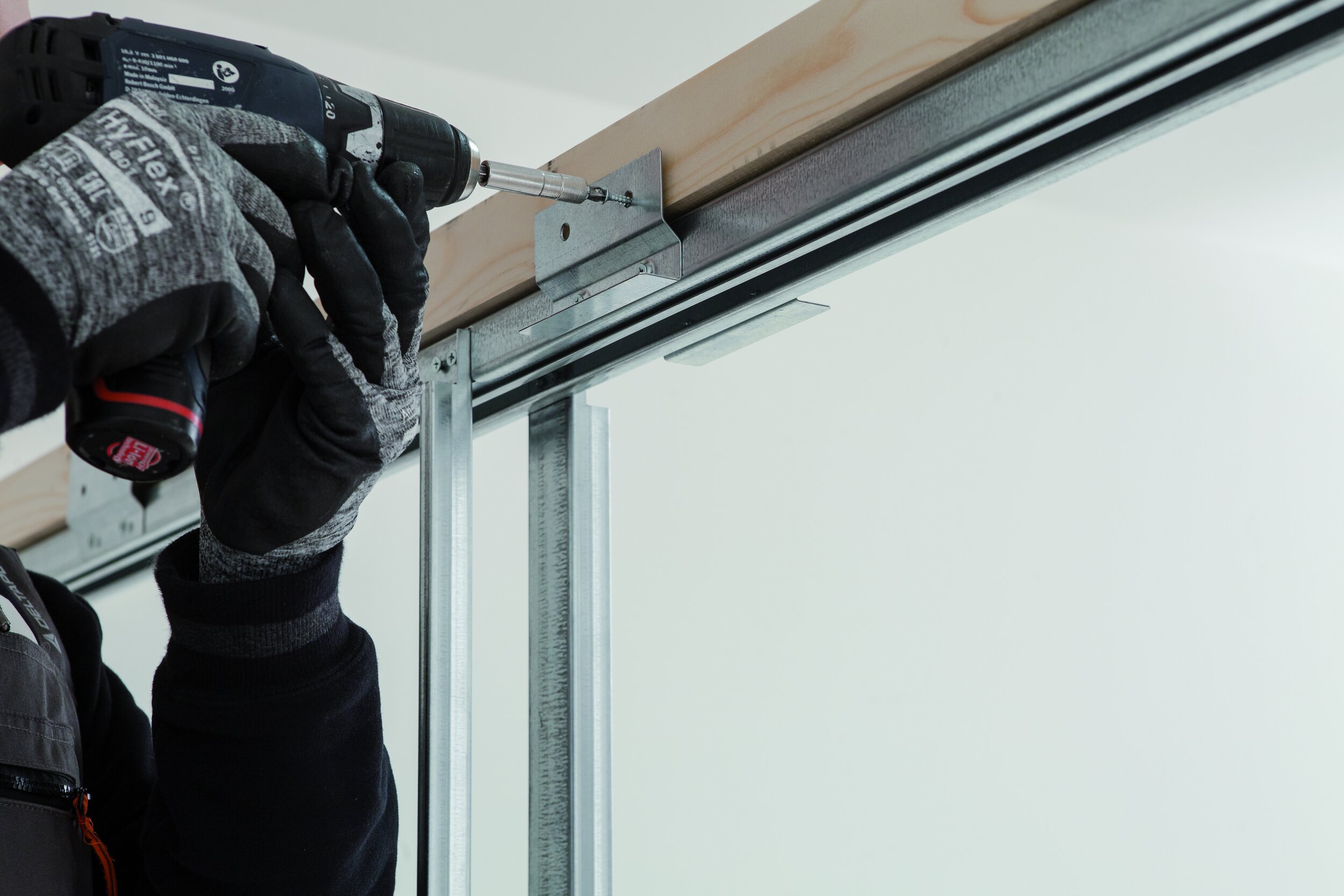
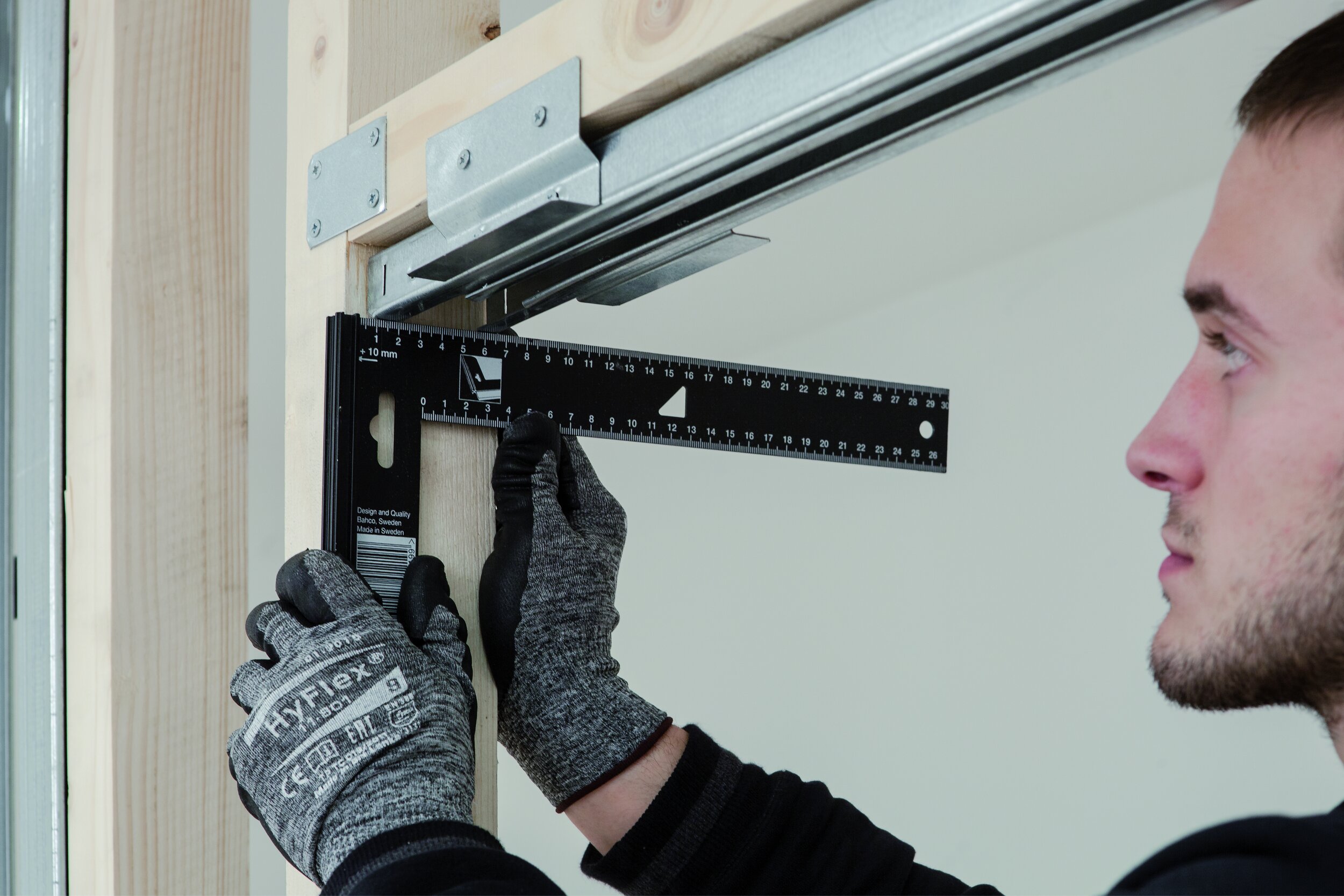
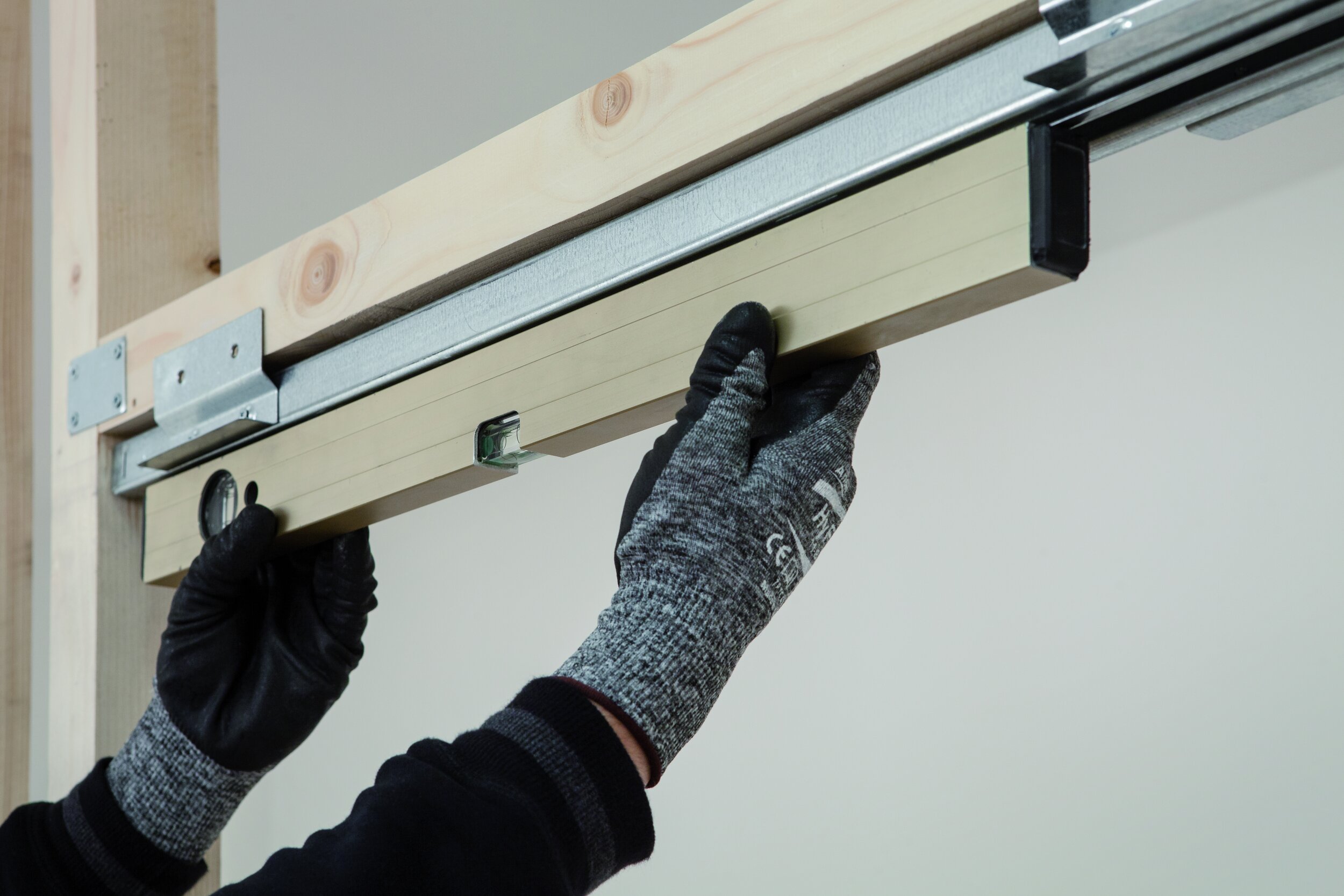
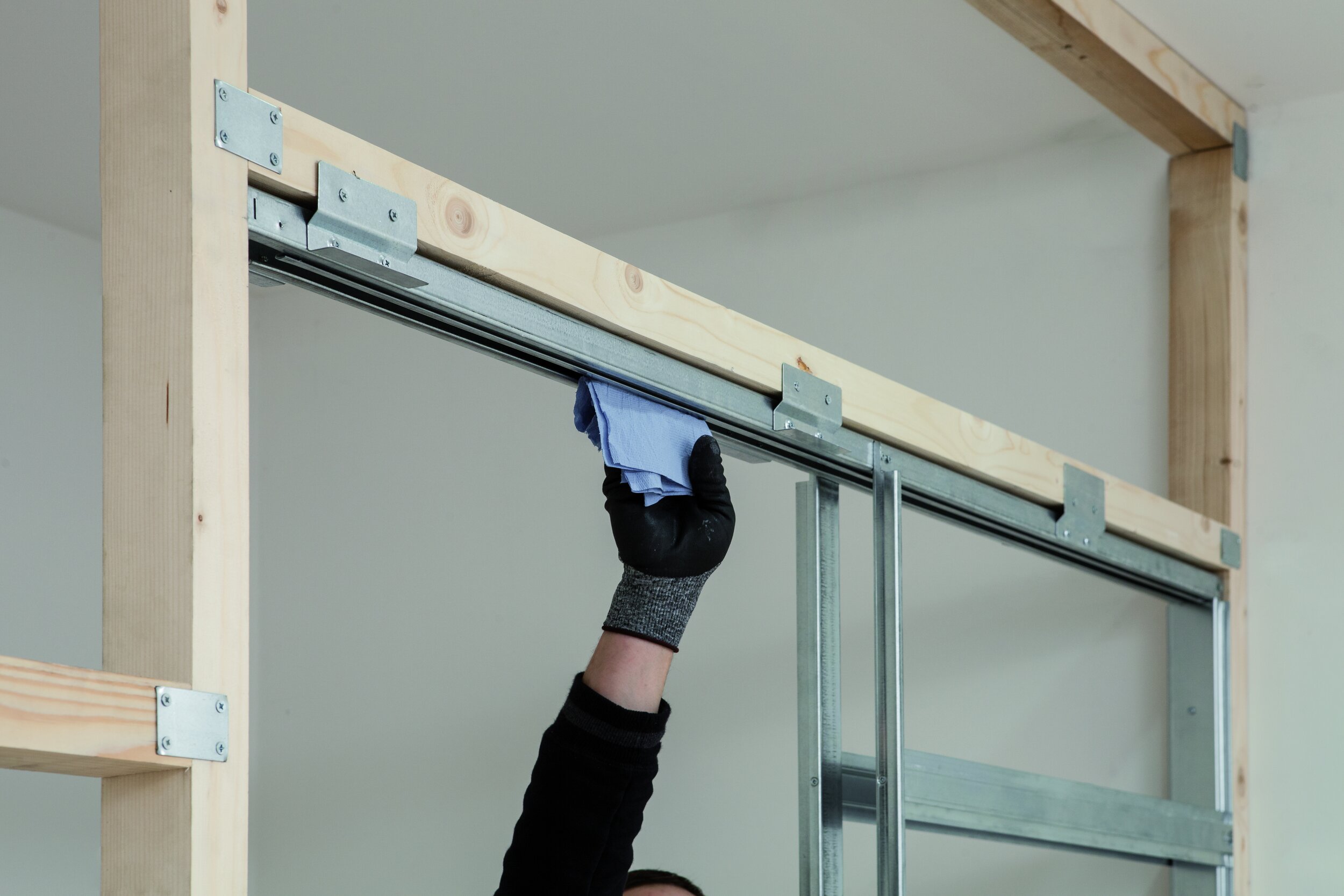

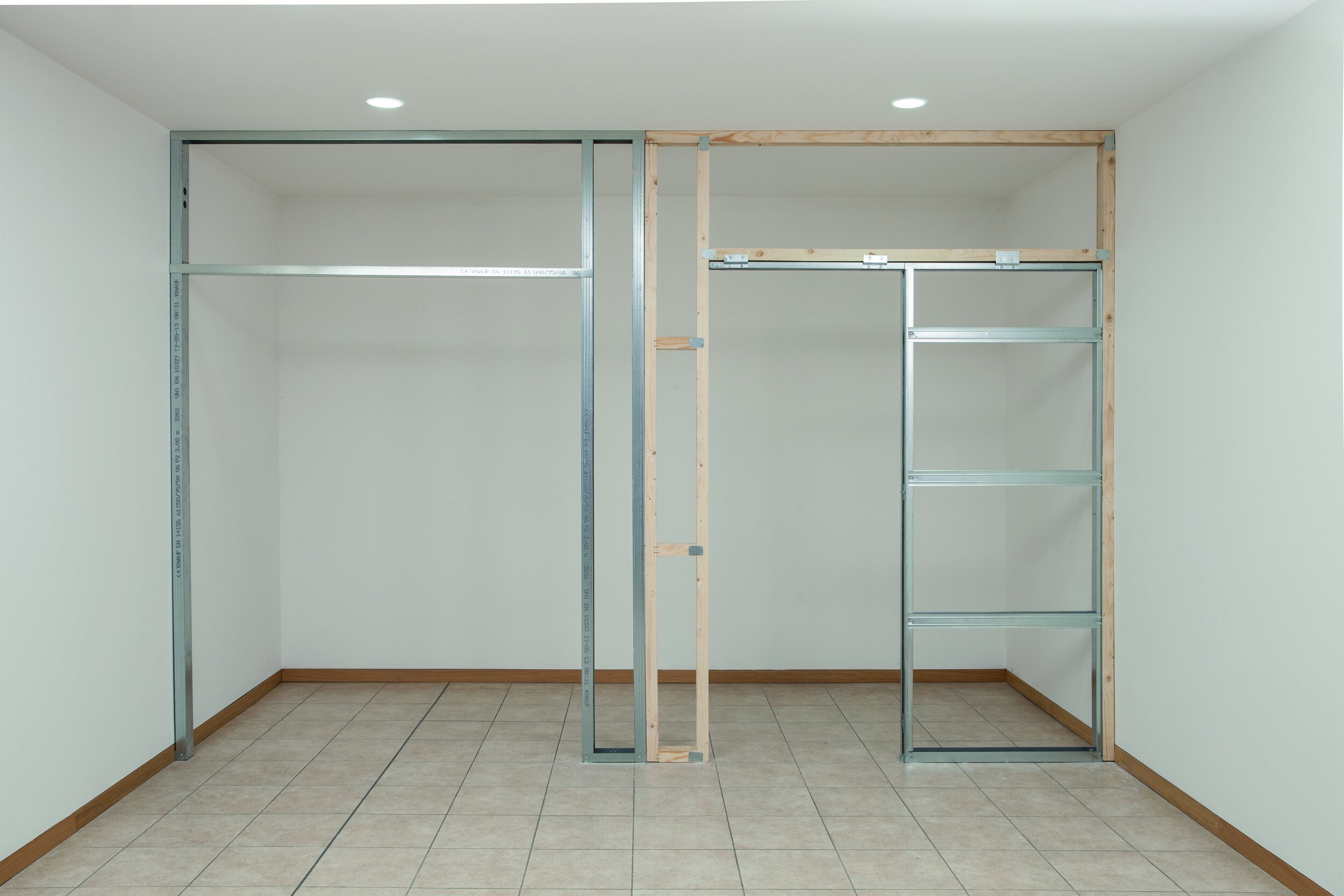
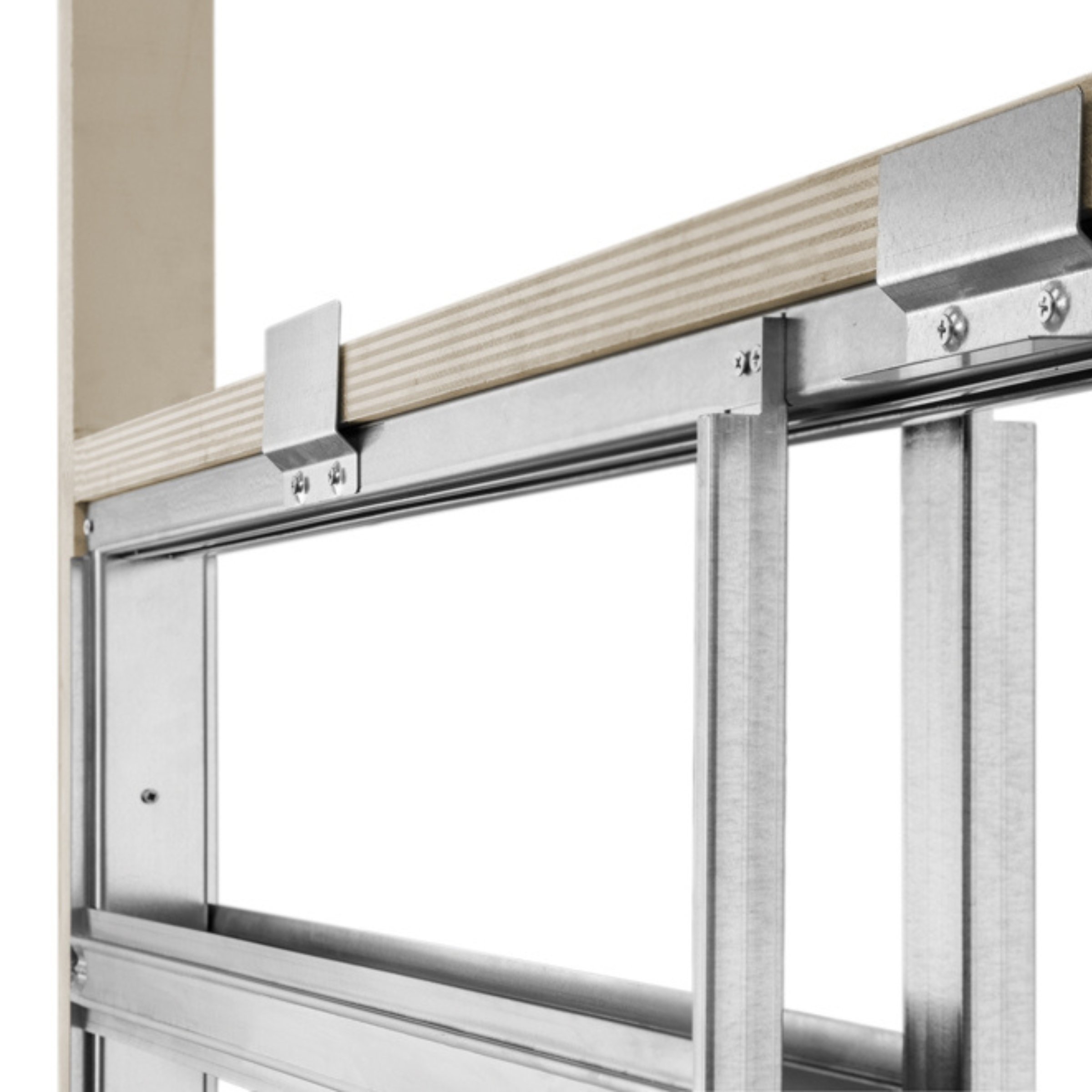
Ultra Flush stud work
Minimum stud 63mm - No max
Suitable for steel, timber and masonry wall - please see diagram for masonry wallls.
Attach a single 12.5mm plasterboard layer to each side of the flush frame (see instructions for details on push and pull options). Our frame is designed to allow a thin layer of plaster to meet seamlessly at each corner, creating a perfect flush finish.
Masonry walls
To Install in masonry wall add a 30mm timber around the opening.
